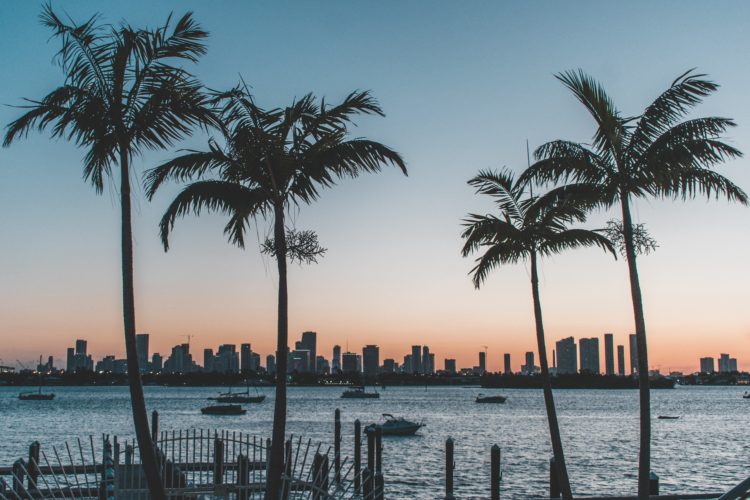
Tips for Fertilizing Your Lawn This Spring
 Michael Tomaino
Michael Tomaino
With the temperatures right and the moisture ready to help support your budding lawn or garden, Spring is the absolute best season to get your fertilization process going. Sounds simple, right? For the most part, it’s not a terribly difficult process, but before you buy your fertilizer and get to nourishing and feeding your yard, there are a few things you should know in order to get the best results.
We’ve been landscaping for nearly two decades, and throughout that time, we’ve put together a few tips that have become tried-and-true methods for proper fertilization in the Spring. Want to check out our advice, tips, and ideas? Read on! We’ve got the best Spring fertilization tricks below in our article packed with fertilization know-how:
Pick the Right Kind of Fertilizer
Fertilizing your lawn in Spring is a vital step for ensuring a properly cared for, nourished lawn – but you want to make sure you’re picking the right kind of fertilizer in order to best take care of your lawn. We suggest choosing an all-purpose fertilizer, but the best type of fertilizer is always going to be the one that makes the most sense for you. One of our quick-and-easy fertilizer tips? Add coffee grounds to your compost or directly to the soil – those nitrogen elements are going to help aid growth like magic.
Know Your Numbers
If you’ve ever picked up a bag of fertilizer, you know there are three numbers printed on the side of the bag. These numbers matter! They show the percentages of nitrogen, phosphate, and potassium – the nutrients that you need to feed your lawn correctly! This set of numbers is known as the NPK ratio. Before you go and pick out your fertilizer, we suggest getting your soil tested. This way, you’ll know which portion of the ratio your lawn needs more of, which numbers to buy, and what kind of fertilizer can best benefit your lawn!
Check out the Slow-Release Fertilizer
If you’re interested in a fertilizer that can do more for your lawn, we suggest looking into slow-release fertilizer. This type of fertilizer allows you to wait up to eight weeks before you have to fertilize again, depending on watering – a much more convenient choice than every four weeks! Check out a slow-release fertilizer that contains a good amount of nitrogen, but again, we suggest getting your soil tested first to determine the needs of your lawn and garden.
Granules are a Good Choice
We suggest granule fertilizer for those who are just starting to dive into the fertilization process. It’s easy to apply accurately, doesn’t take a professional to determine whether or not you’re doing it correctly, and doesn’t require much equipment. All you need is a spreader!
Choose Your Timing Wisely
Like we said, spring is the best time to start your fertilization process – but when exactly is the best time? We suggest waiting after your first spring mowing to fertilize your lawn. Additionally, ensure that you’re watering your lawn thoroughly a day or so beforehand.
Once the lawn is completely dry, it’s time to get your fertilization process going.
Most importantly, remember that if you’re new into lawncare or it’s your first time fertilizing your own yard, there’s going to be a learning curve. The best way to determine your success? Look at your lawn! Your ideal grass color is likely a light shade of green, and over fertilization or under fertilization is going to change the colors (a good way to tell if you’re doing something incorrectly).
Post-Fertilization Matters, Too
Once you’ve handled the fertilizer, picked the right timing, and done the dirty work, you’ve got to get going on the post-fertilization treatment. That’s right. The hard work doesn’t end after you’ve loaded the hopper and spread out the fertilizer, there’s much more to do be done to ensure that your fertilization process sticks and does what it’s supposed to.
Water, Water, Water
For starters, ensure that you’re watering your lawn after the fertilizer has been applied. A light watering should do, but if you skip this step, you’ll miss out on the vital process of washing the fertilizer off of the grass blades and soil. That being said, if there’s going to be a heavy storm or a ton of rain in the next few days, skip out on watering – the grass will be getting enough moisture. If you know of the storm before you fertilize, we recommend holding off on fertilizer (as we stated above), it’s likely that a storm will wash that fertilizer into storm drains and streams (a not-so-great result for both your lawn and the environment).
Grass Cycling
This is another post-fertilization process to consider. While some people prefer to use regular fertilizer in the place of this, you can choose to fertilize an undergo this process to further fertilize your lawn! Grass cycling is the process of letting your grass clippings lie on the lawn after you mow, fulfilling up to 25 percent of your lawn’s fertilizer needs. This plays a huge role in nourishing your lawn and can be a great post-fertilization tool to help your yard and garden flourish.
Regular Maintenance is Going to Be Vital
Taking care of your spring fertilization is a big, vital step toward bettering your lawn and garden, but you can’t fertilize once and call it quits. That simply won’t keep your yard vital and healthy. Instead, make sure that once you’ve fertilized, you’re focusing on a regular maintenance plan with a scheduled crew (we’d love to help out!). We’ll help you create a specific seasonal plant and mulch installation plan to enhance your property, create a happier, healthier yard, and get you the results from your lawn and garden you’ve always dreamed of!
Did you enjoy our fertilization article? We hope you found it helpful and that it will benefit your yard this spring. If you’re interested in more Spring time advice or just want to chat all things lawn and garden (we’d love to, trust us!), give our office a call at (727)-201-3947. Want access to our advice, tips and tricks, and nuggets of knowledge? Keep reading our blog!

Michael Tomaino
Head Gardener for Landcrafters, Inc. Michael Tomaino, a cornerstone of Landcrafters since its inception, oversees all aspects of business operations with a wealth of experience. With years of adept team management and leadership under his belt, coupled with a robust educational background, both within and beyond the industry, Michael is dedicated to steering Landcrafters towards becoming the foremost landscape management provider in the Tampa Bay Area.
